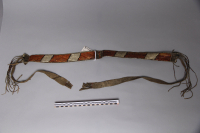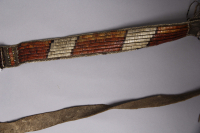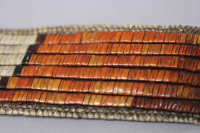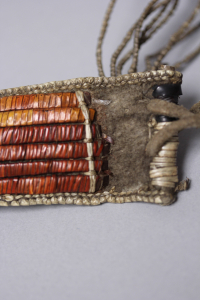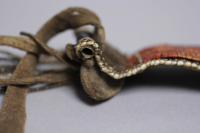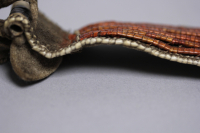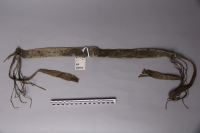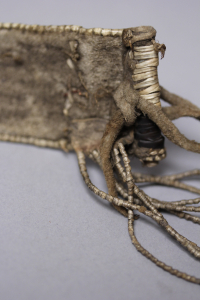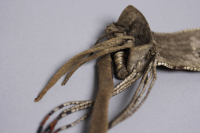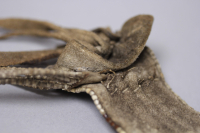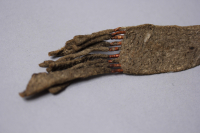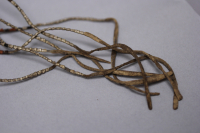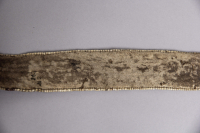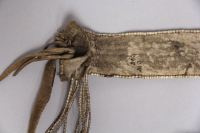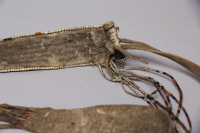belt
belt
belt
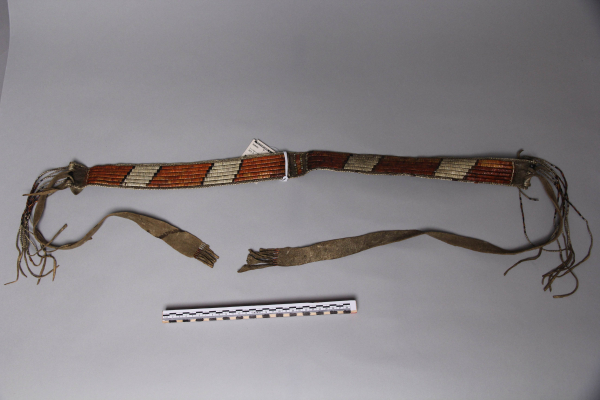
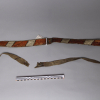
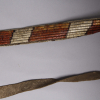

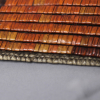
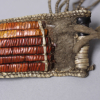
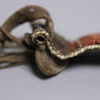

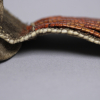
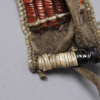
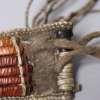



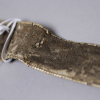
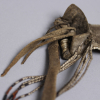
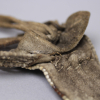
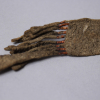
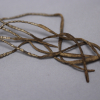
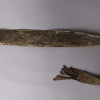

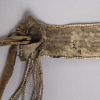

A hide belt decorated with rows of wrapped quillwork and a small central vertical band of quills and glass beads. Purchased by the museum in 1883 from Charles Jamrach, a German arts dealer based in London who had an ethnography shop.
Museum documentation, GRASAC generated
Read More About This Relative
hide; porcupine quills; sinew; possibly spruce root(?); hide thongs; glass beads; possibly large hollow feather shafts or rolled birchbark(?)
The belt is made of hide sewn with sinew and decorated with quillwork. Single quill edging used along the trim. For the wrapped quillwork panels, flattened dyed quills are wrapped around long strips of possibly spruce root(?) to form six rows. Each row appears to be secured individually, sewn to the hide along the underside of each strip with possibly sinew, and then sewn together to the hide at the ends with a line of possibly porcupine quills. At the centre of the belt is a small vertical strip of quillwork applied in zigzag band technique, flanked by two lines of green and white glass beads applied with sinew. At the ends of the belt, the hide appears to be sewn around possibly a large hollow feather shaft or possibly thin rolled birchbark with sinew and porcupine quills. Two long strips of hide terminating in short thong fringe with wrapped quills are attached to the belt with hide thongs that have been laced through two holes at each end of the belt. Also at each end of the belt is a piece of hide that has been sewn with sinew and cut into long hide thongs wrapped with dyed quillwork forming the appearance of a long loose fringe.
Alternating blocks of colour of red/orange, dark brown, and white; parallel lines
Provenance
Bought in 1883 from Charles Jamrach, a German arts dealer based in London who had an ethnography shop
About This GRASAC Record
44.736, -88.788
Museum documentation
 Knowledge Sharing Platform
Knowledge Sharing Platform

